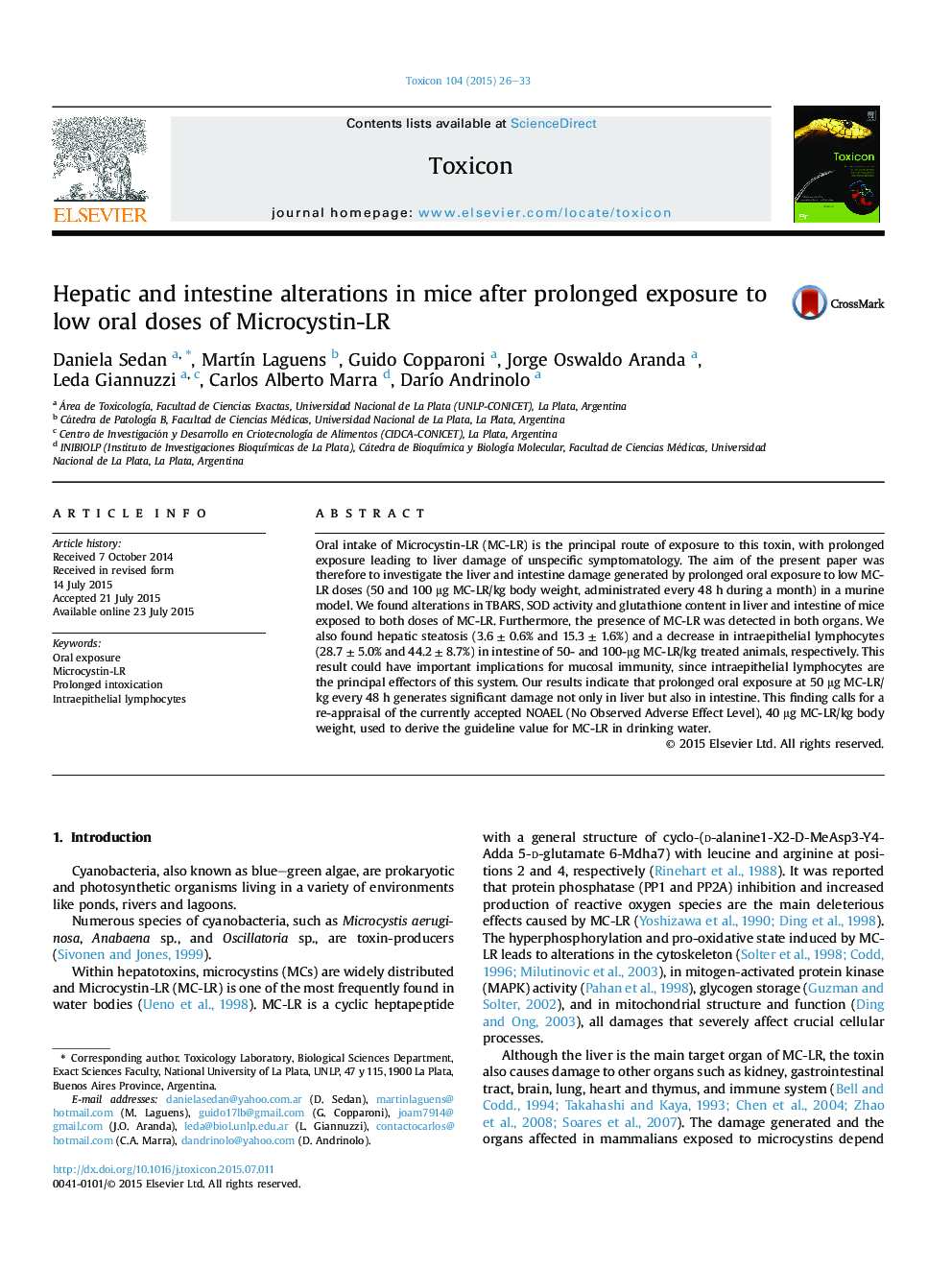| Article ID | Journal | Published Year | Pages | File Type |
|---|---|---|---|---|
| 8395349 | Toxicon | 2015 | 8 Pages |
Abstract
Oral intake of Microcystin-LR (MC-LR) is the principal route of exposure to this toxin, with prolonged exposure leading to liver damage of unspecific symptomatology. The aim of the present paper was therefore to investigate the liver and intestine damage generated by prolonged oral exposure to low MC-LR doses (50 and 100 μg MC-LR/kg body weight, administrated every 48 h during a month) in a murine model. We found alterations in TBARS, SOD activity and glutathione content in liver and intestine of mice exposed to both doses of MC-LR. Furthermore, the presence of MC-LR was detected in both organs. We also found hepatic steatosis (3.6 ± 0.6% and 15.3 ± 1.6%) and a decrease in intraepithelial lymphocytes (28.7 ± 5.0% and 44.2 ± 8.7%) in intestine of 50- and 100-μg MC-LR/kg treated animals, respectively. This result could have important implications for mucosal immunity, since intraepithelial lymphocytes are the principal effectors of this system. Our results indicate that prolonged oral exposure at 50 μg MC-LR/kg every 48 h generates significant damage not only in liver but also in intestine. This finding calls for a re-appraisal of the currently accepted NOAEL (No Observed Adverse Effect Level), 40 μg MC-LR/kg body weight, used to derive the guideline value for MC-LR in drinking water.
Related Topics
Life Sciences
Biochemistry, Genetics and Molecular Biology
Biochemistry, Genetics and Molecular Biology (General)
Authors
Daniela Sedan, MartÃn Laguens, Guido Copparoni, Jorge Oswaldo Aranda, Leda Giannuzzi, Carlos Alberto Marra, DarÃo Andrinolo,
